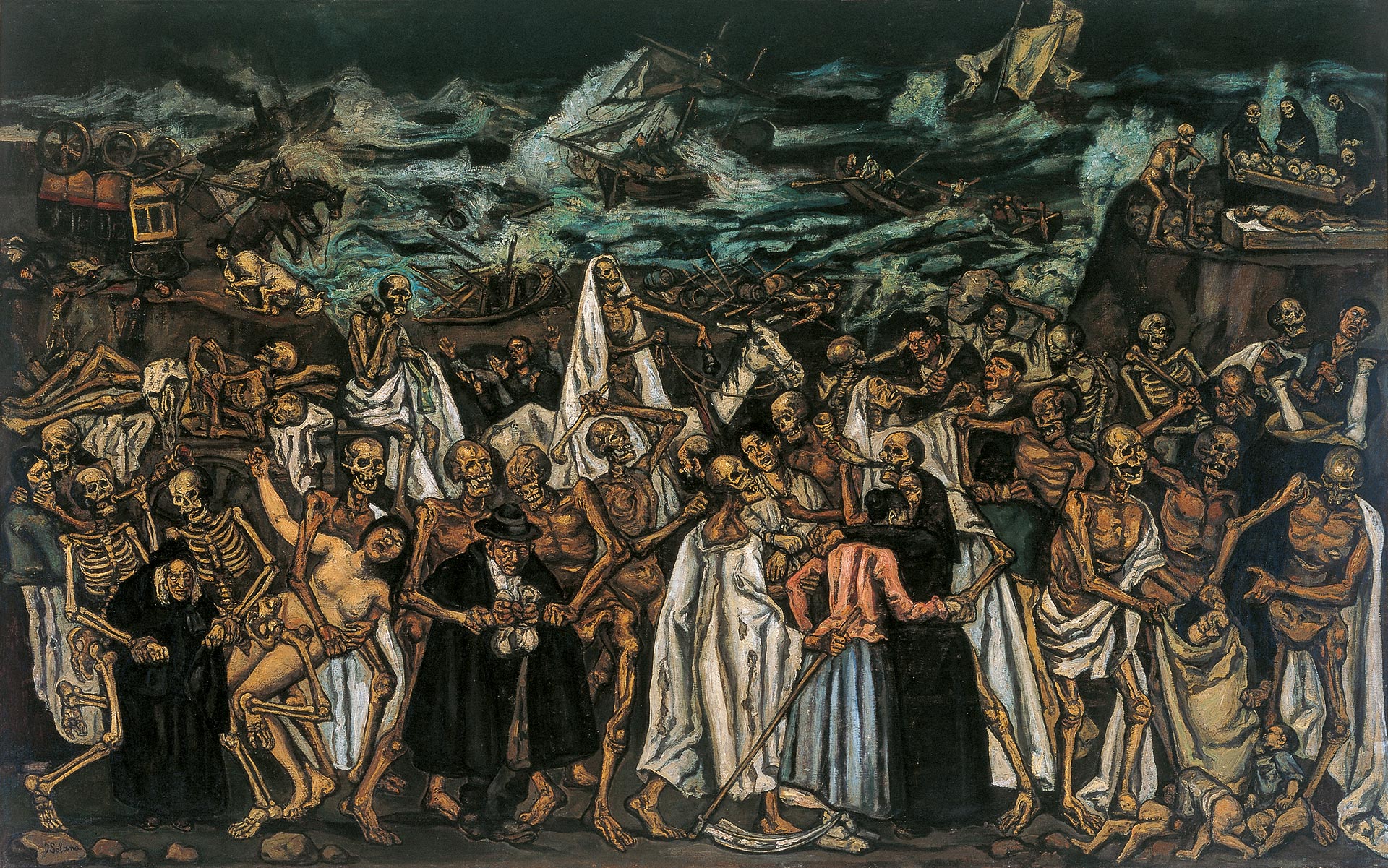
José Gutiérrez Solana (Madrid, 1886-1945)
The End of the World (The Triumph of Death)
circa 1932
WORK INFORMATION
Oil on canvas, 148 x 232 cm
OTHER INFORMATION
Signed in the lower left-hand corner: "J. Solana" Inscription on the reverse, on the stretcher: "El fin del mundo. José G. Solana"
The End of the World is one of Solana’s most ambitious works, not just for the large number of figures that it includes but in the way that it aims to reflect the drama of individuals facing death, sin and possible punishment. The image includes the Capital Sins, specifically the figures of Lust and Avarice, vices for which Solana considered that there was no possible redemption. His painting bears certain resemblances to The Triumph of Death by Pieter Bruegel the Elder. Above all, however, it is a work that allows us to appreciate Solana’s powerful visual sense, the harmony of his chromatic range and his compositional abilities. It can be considered a summary of his work as a whole.
Solana considered The End of the World to be his most important painting. In his own words: “[…] leafing through the Nuremberg Chronicle I saw a woodcut: Septima aetas mundi-Imago mortis. It depicts various skeletons emerging from tombs and dancing in a way that makes all their bones rattle: they shake with laughter and the little hair that they have left stands on end; one plays a serpent. In addition, in Pieter Bruegel the Elder’s The Triumph of Death I seem to have seen this image in […] the cart full of skulls and skeletons, pulled by a sickly yellow nag.”
This Last Judgment, devoid of a godhead, a judge and of salvation, tells us that death is final. Solana juxtaposes both the foreground and background elements in a crowded confusion, imbuing them with an enormous sense of drama. This is particularly evident in the broken, twisted figures and in the stormy landscape in the background, some elements of which are reused from the painting of a shipwreck that appears in the background of The Merchant Navy Captain. Space is only given to the figures of the village woman and the old miser who accept their fate with resignation.
Overall, the painting transmits a gloomy, even tragic atmosphere, conveyed through an extensive use of blacks and grey-browns. It reveals a tragic sense of existence that conforms to Solana’s particular vision in which death is part of life itself.
María José Salazar

